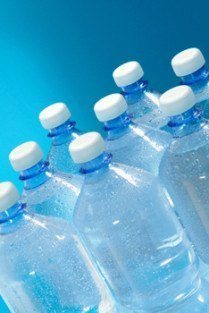Boston, MA – Exposure in the womb to bisphenol A (BPA) – a chemical used to make plastic containers and other consumer goods – is associated with behavior and emotional problems in young girls, according to a study led by researchers at Harvard School of Public Health (HSPH), Cincinnati Children’s Hospital and Medical Center, and Simon Fraser University in Vancouver, British Columbia.
BPA is found in many consumer products, including canned food linings, polycarbonate plastics, dental sealants, and some receipts made from thermal paper. Most people living in industrialized nations are exposed to BPA. BPA has been shown to interfere with normal development in animals and has been linked with cardiovascular disease and diabetes in people. In a 2009 study, HSPH researchers showed that drinking from polycarbonate bottles increased the level of urinary BPA.
In this study, published October 24, 2011, in an advance online edition of Pediatrics, lead author [[Joseph Braun]], research fellow in environmental health at HSPH, and his colleagues found that gestational BPA exposure was associated with more behavioral problems at age 3, especially in girls.
The researchers collected data from 244 mothers and their 3-year-old children in the Health Outcomes and Measures of the Environment Study, conducted in the Cincinnati area. Mothers provided three urine samples during pregnancy and at birth that were tested for BPA; their children were tested each year from ages 1 to 3. When the children were 3 years old, the mothers completed surveys about their children’s behavior. “None of the children had clinically abnormal behavior, but some children had more behavior problems than others. Thus, we examined the relationship between the mom’s and children’s BPA concentrations and the different behaviors,” Braun said.
BPA was detected in over 85% of the urine samples from the mothers and over 96% of the children’s urine samples. The researchers found that maternal BPA concentrations were similar between the first sample and birth. The children’s BPA levels decreased from ages 1 to 3, but were higher and more variable than that of their mothers.
After adjusting for possible contributing factors, increasing gestational BPA concentrations were associated with more hyperactive, aggressive, anxious, and depressed behavior and poorer emotional control and inhibition in the girls. This relationship was not seen in the boys.
The study confirms two prior studies showing that exposure to BPA in the womb impacts child behavior, but is the first to show that in utero exposures are more important than exposures during childhood, Braun said. “Gestational, but not childhood BPA exposures, may impact neurobehavioral function, and girls appear to be more sensitive to BPA than boys,” he said.
Although more research is needed to fully understand the health effects of BPA exposure, clinicians can advise those concerned to reduce their BPA exposure by avoiding canned and packaged foods, thermal paper sales receipts, and polycarbonate bottles with the number 7 recycling symbol, the authors wrote.
Bruce Lanphear of Simon Fraser University was senior author of the study.
The study was funded in part by the National Institute of Environmental Health Sciences and the U.S. Environmental Protection Agency.
“Impact of Early Life Bisphenol A Exposure on Behavior and Executive Function in Children,” Joe M. Braun, Amy E. Kalkbrenner, Antonia M. Calafat, Kimberly Yolton, Xiaoyun Ye, Kim N. Dietrich, and Bruce P. Lanphear. Pediatrics: online October 24, 2011.
For more information:
Marge Dwyer
mhdwyer@hsph.harvard.edu
617.432.8416
photo: iStockphoto.com
Visit the HSPH website for the latest news, press releases, and multimedia offerings.
###
Harvard School of Public Health (https://www.hsph.harvard.edu) is dedicated to advancing the public’s health through learning, discovery, and communication. More than 400 faculty members are engaged in teaching and training the 1,000-plus student body in a broad spectrum of disciplines crucial to the health and well being of individuals and populations around the world. Programs and projects range from the molecular biology of AIDS vaccines to the epidemiology of cancer; from risk analysis to violence prevention; from maternal and children’s health to quality of care measurement; from health care management to international health and human rights. For more information on the school visit: https://www.hsph.harvard.edu
HSPH on Twitter: http://twitter.com/HarvardHSPH
HSPH on Facebook: http://www.facebook.com/harvardpublichealth
HSPH on You Tube: https://www.youtube.com/user/HarvardPublicHealth
HSPH home page: https://www.hsph.harvard.edu
